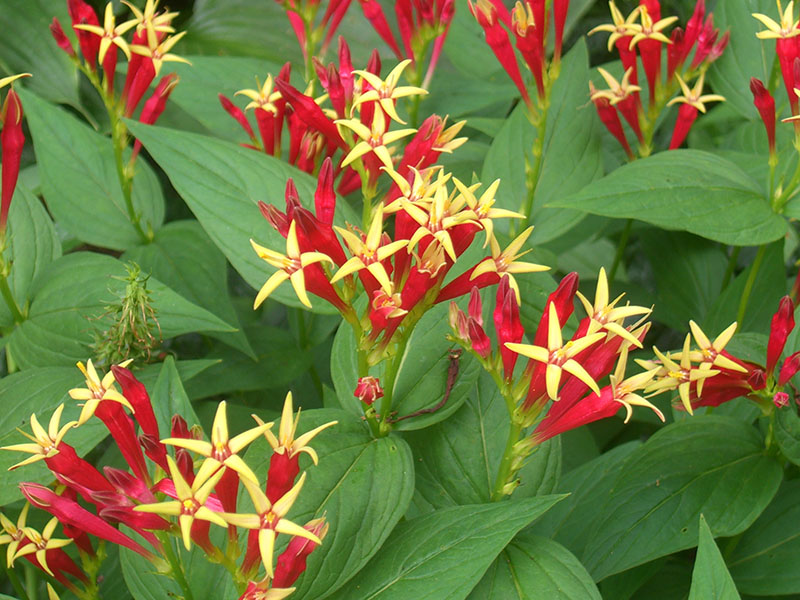Indian Pink
Spigelia marylandica
Click here to download a PDF of this plant information page (for printing).

Sun Exposure: Full Sun, Pt Sun, Shade
Season of Interest: Spring, Summer, Fall
Bloom Time: May - September
Bloom Color: Red/Yellow
Height: 16 to 24 in.
Spread: 16 in.
Spacing: 24 in.
Water Needs: Average
Maintenance: Very little
Soil Type: Moist, High in organic matter
Soil pH: Acidic
Soil Drainage: Well drained
Pests: Slugs
Diseases: None
Wildlife: Bees, Butterflies, Hummingbirds

Description:
Indian pink (Spigelia marilandica), also known as pinkroot or wormgrass, is a native, herbaceous perennial that naturally occurs southeastern US. Showy, tubular flowers open during mid-May to early June depending on elevation. Clusters of elongate flower buds are formed at the top of each stem, and mature to a vibrant scarlet red. Each flower opens with 5-pointed petals that create an intense yellow star at the top of the floral corolla. Operation Ruby Throat has rated Indian pink in their top ten, native hummingbird-attracting plants. The wildflowers have a prolonged bloom time (from late spring to early summer) and bright red bloom color. Indian pink prefers to grow in semi-shaded, woodland sites with adequate soil moisture. They may be found also growing along the edges of rich, moist woods in partly-sunny sites. Irrigation may be required in more sunny landscape settings. Plants are upright in form and grow to 18 to 28 inches tall. Foliage will be denser, and plants will be more compact and floriferous in sites with greater amounts of sunlight. In shady habitats, the plants will be taller and leggier. For more information see:
plants.ces.ncsu.edu/plants/spigelia-marilandica
Care and Growing Tips:
This summer-blooming plant mostly enjoys part shade or light shade. It tolerates full shade to some extent but turns out to be less healthy and less attractive as compared to the plant growing in partial shade. The Indian pink plant prefers to grow in acidic soils with average moisture. However, the plant is drought-resistant to a considerable extent. If grown in full sun, it needs more watering than in the partial shade. This plant requires a regular fertilizer, made specifically for plants growing in acid soil. It does well in rich, well-moist soil moisture with a high organic matter. It is better to transplant it when young and the ideal time to transplant a spigelia marilandica plant is in spring. For a full, more vigorous bloom, prune lightly after its initial blooming. Cut away damaged or frail leaves.